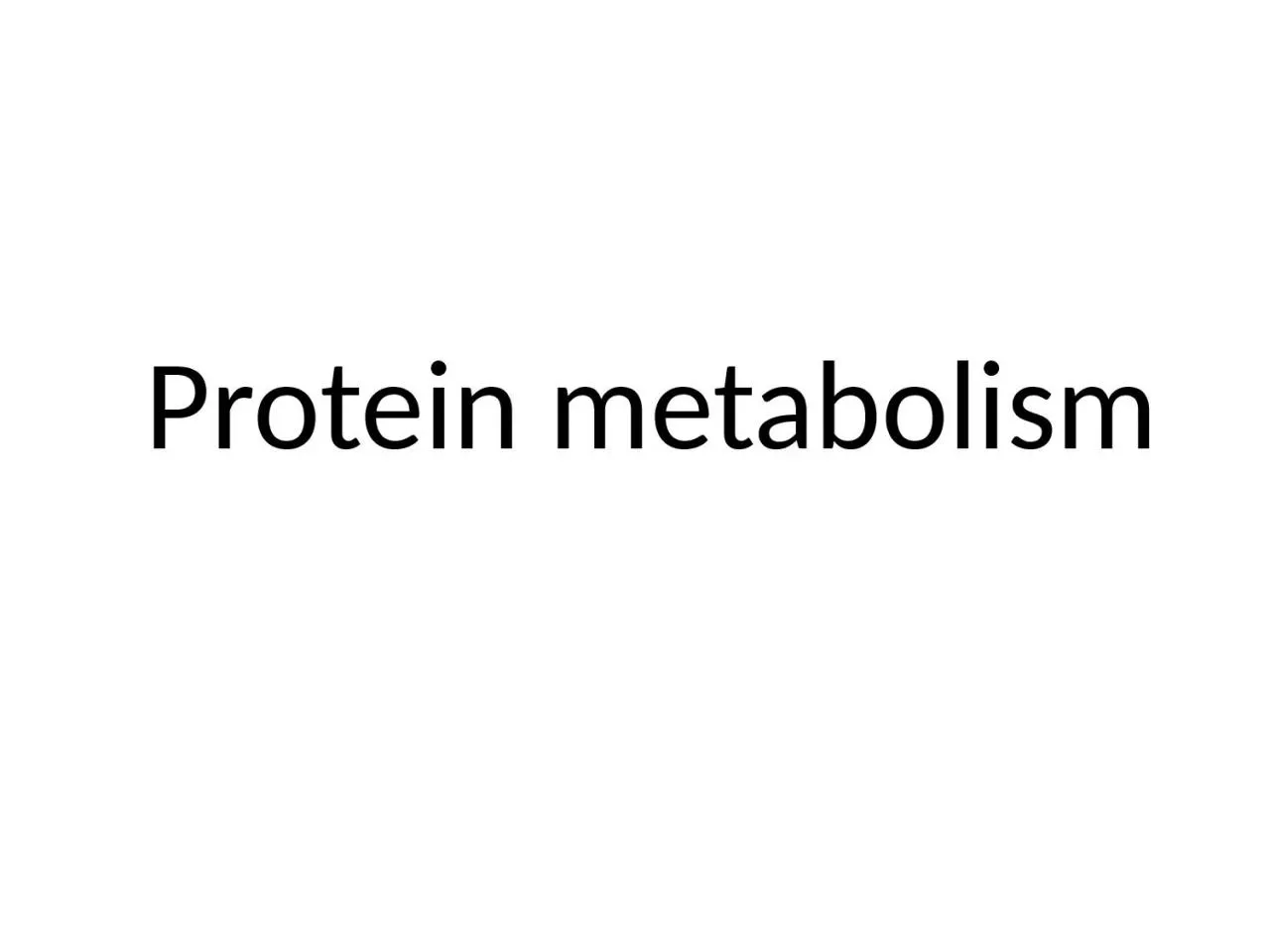

Classification based on Functions i Catalytic proteins eg enzymes ii Structural proteins eg collagen elastin keratin iii Contractile proteins eg myosin actin iv Transport proteins eg hemoglobin ID: 1044960
Download Presentation The PPT/PDF document "Protein metabolism CLASSIFICATION OF PR..." is the property of its rightful owner. Permission is granted to download and print the materials on this web site for personal, non-commercial use only, and to display it on your personal computer provided you do not modify the materials and that you retain all copyright notices contained in the materials. By downloading content from our website, you accept the terms of this agreement.
1. Protein metabolism
2. CLASSIFICATION OF PROTEINSClassification based on Functions:i) Catalytic proteins, e.g. enzymes.ii) Structural proteins, e.g. collagen, elastin, keratin.iii) Contractile proteins, e.g. myosin, actin.iv) Transport proteins, e.g. hemoglobin, myoglobin, albumin, transferrin.v) Regulatory proteins or hormones, e.g. ACTH, insulin, growth hormone.vi) Genetic proteins, e.g. histones.vii) Protective proteins, e.g. immunoglobulins, clotting factors.
3. Peptide bond formation When two amino acids form a dipeptide through a peptide bond it is called condensation. In condensation, two amino acids approach each other, with the acid moiety of one coming near the amino moiety of the other. This reaction produces a molecule of water (H2O) and two amino acids joined by a peptide bond (-CO-NH-). The two joined amino acids are called a dipeptide.
4.
5. Amino acid metabolism
6. Electrophoresis The technique for separating proteins by mean of an electrical current is called electrophoresis. At pH 8.6, all the serum proteins carry a negative charge to a greater or leaser extent. if a small serum sample is placed upon a wet (pH 8.6 buffer) support medium, such as cellulose acetate or agarose gel interposed between two electrodes immersed in pH 8.6, and subjected to an electrical charge of several hindered volts, the proteins move toward the positive pole (anode).
7. The migration distance varies directly with the charge carried by the protein, but is modified to a slight extent by buffer flow. The buffer flow (electro-osmotic or endosmotic flow) is caused by the negative charge of the support medium when the capillaries or pores become wet, thereby leaving the liquid medium ( buffer ) with small positive charge.
8.